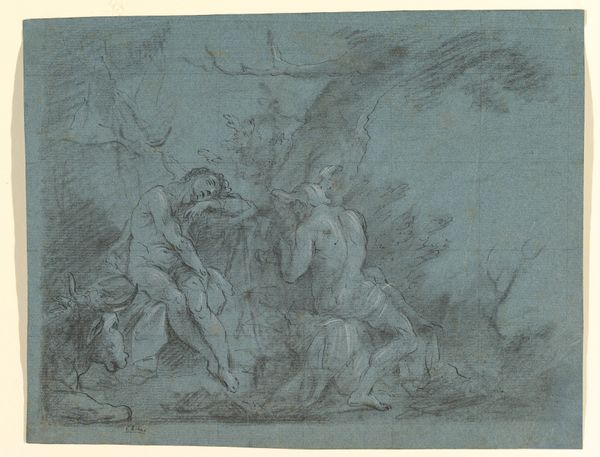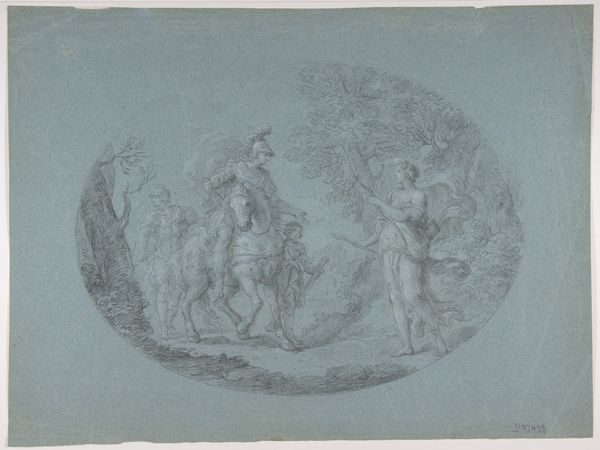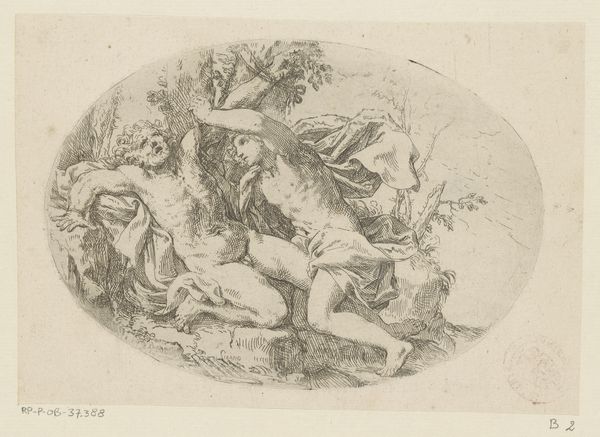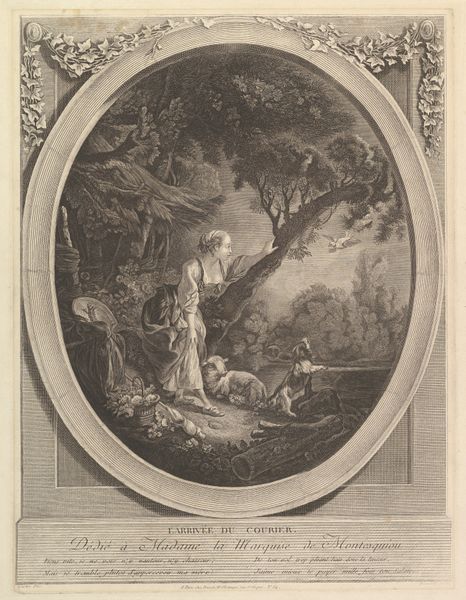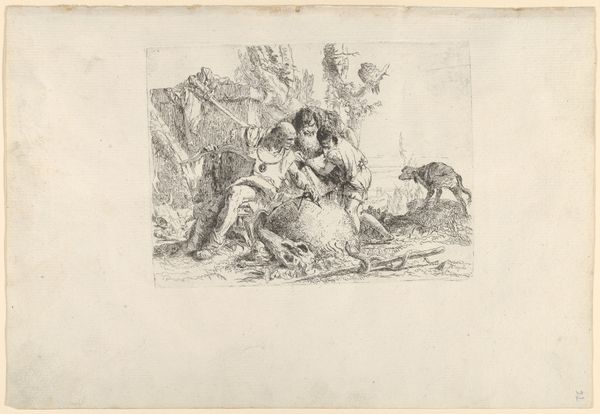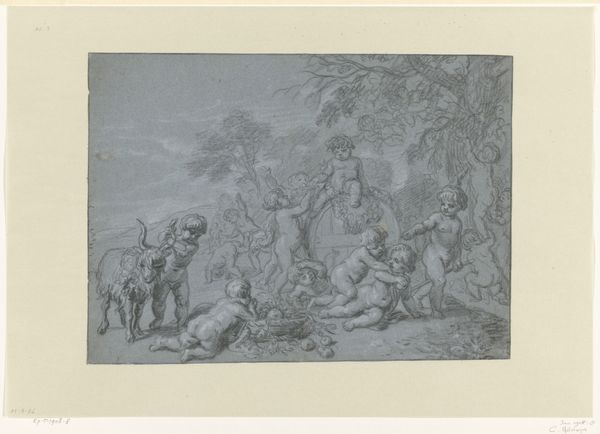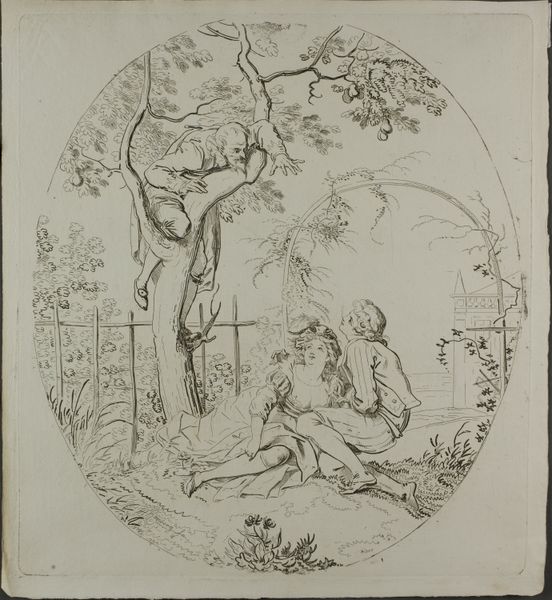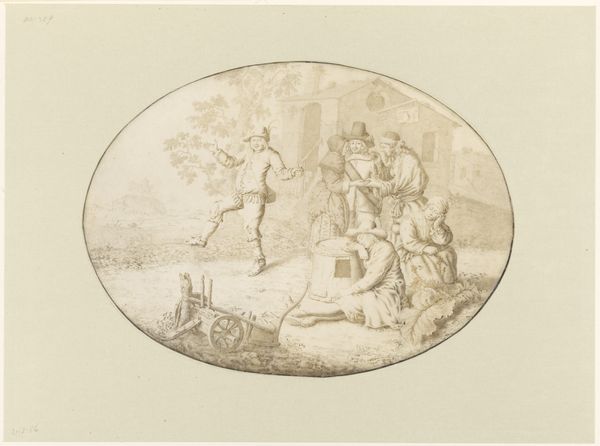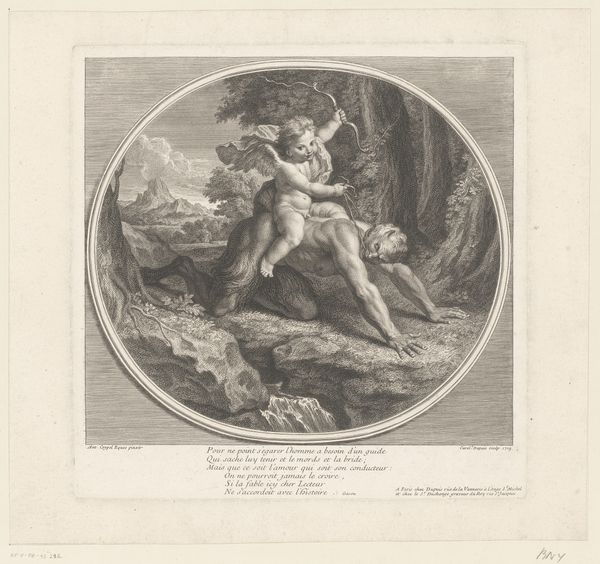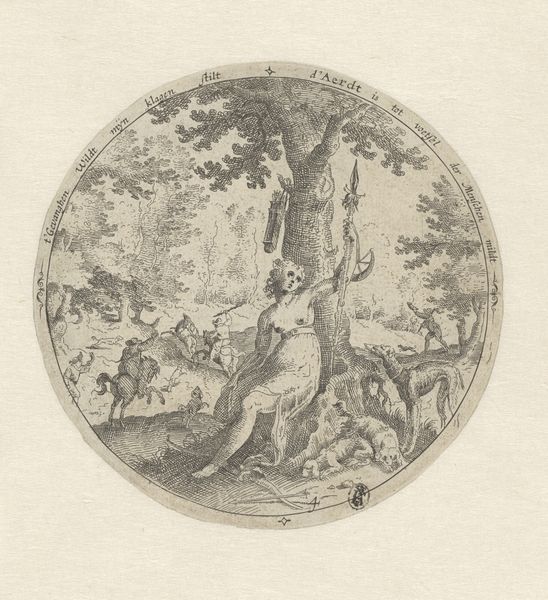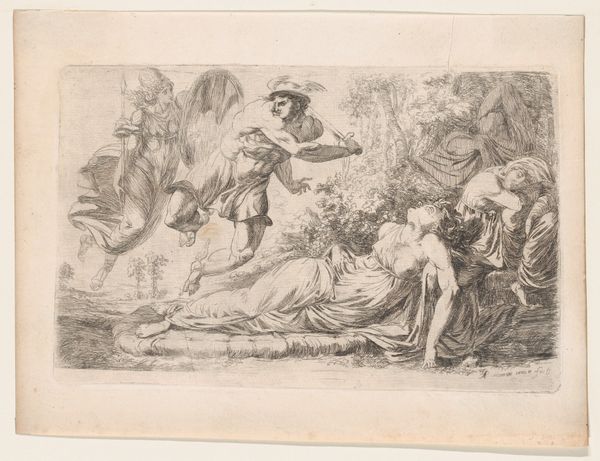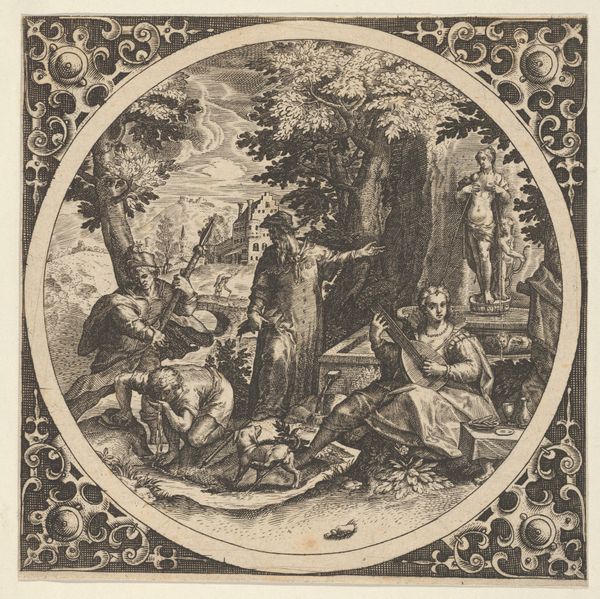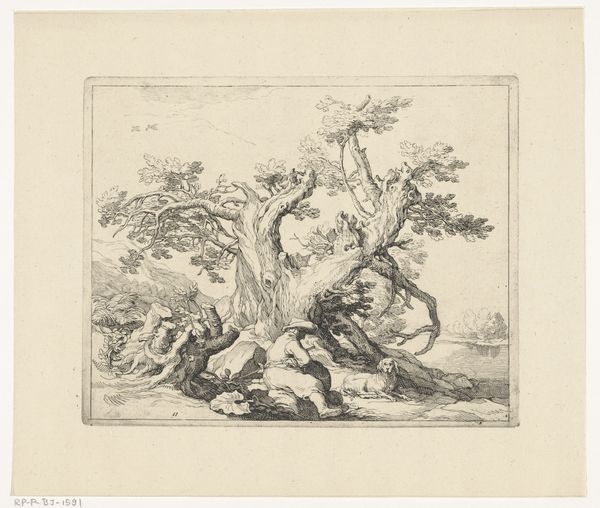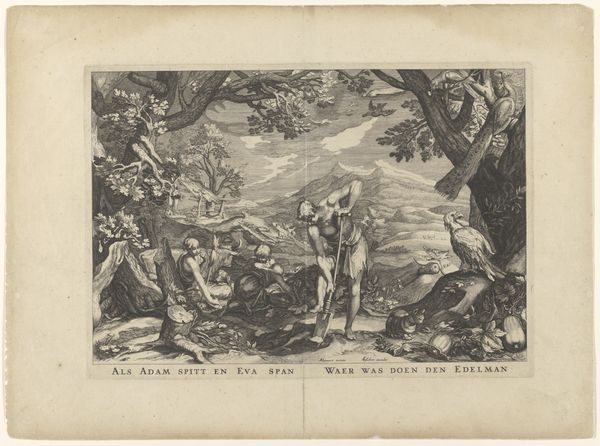
drawing, print, paper, ink, pencil, chalk
#
drawing
#
neoclacissism
#
narrative-art
# print
#
pencil sketch
#
landscape
#
figuration
#
paper
#
ink
#
pencil
#
chalk
#
history-painting
Dimensions: 269 × 409 mm
Copyright: Public Domain
Editor: So, here we have Giovanni Battista Cipriani's "Birth of Adonis," a drawing created sometime between 1775 and 1785. It's made with pencil, ink, and chalk on paper. It strikes me as a very dynamic composition, even though the colors are quite muted. What symbolic weight do you think is embedded in a work like this? Curator: This work pulses with coded messages, wouldn’t you agree? We see Adonis's birth, a foundational myth in Western art. Cipriani’s Neoclassical style invokes a return to classical ideals, reflecting an era seeking order and reason. The circle enclosing the scene… what do you think of it? Editor: I'm guessing that the circular frame might be a symbol of wholeness? Curator: Precisely! The circular form could evoke the cyclical nature of life, death, and rebirth, mirroring Adonis's story itself, forever caught in nature’s rhythm. Notice the prominence of the tree... how might it signify life, growth, but also vulnerability, considering what ultimately happens to Adonis? What’s your perspective? Editor: That's a compelling interpretation. I initially focused on the narrative itself. Curator: Narrative is key, of course. The story’s cultural memory reinforces enduring themes: beauty, mortality, and the eternal dance between humans and gods. These figures – consider their placement. Their gestures speak volumes, echoing themes of desire and tragedy across millennia. And what about that landscape behind the figures? How does nature emphasize the human drama being presented to us? Editor: So it’s about reading the symbols to unlock these deeper meanings? I had assumed that its meaning simply represented the mythological narrative. Curator: Exactly! Each carefully rendered figure, each subtly placed element contributes to the grand allegorical message. Reflect on how this seemingly simple drawing reverberates with echoes of the past, shaping our understanding of beauty and sorrow today. I must agree it is thought-provoking, to say the least. Editor: I've never really looked at art from the standpoint of iconography and symbols. Now, the artwork has another meaning and purpose to me. Thank you.
Comments
No comments
Be the first to comment and join the conversation on the ultimate creative platform.
